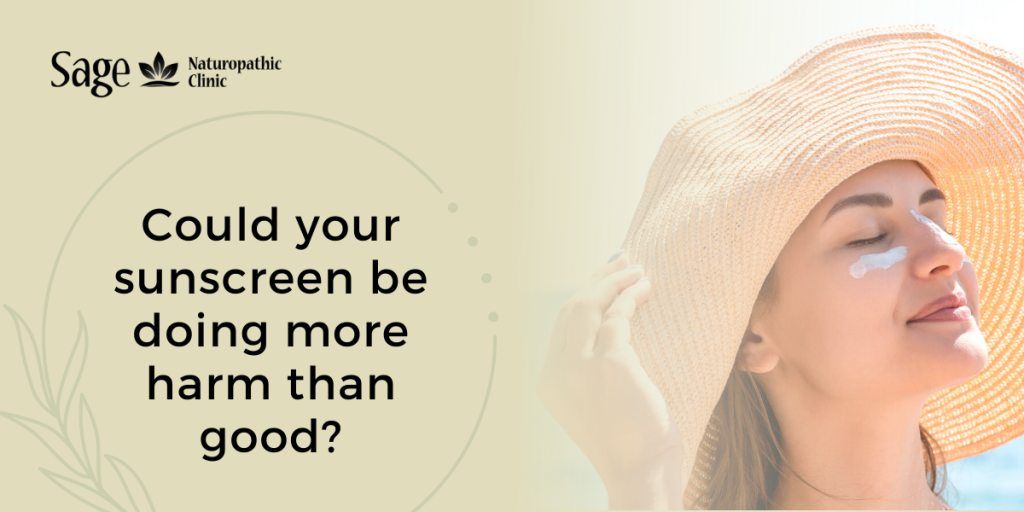
Summer is here again and no one wants to waste the good weather nursing a sunburn, but could your sunscreen be doing more harm than good? When the UV risk is high and you find yourself reaching for the sunscreen, there are choices you can make to decrease the risk posed by your sunscreen.
There are a few ingredients that are best avoided in any sunscreen product. The first is oxybenzone, which can act as an estrogen mimic, and its use may be linked to endometriosis and low birth weights. Retinyl palmitate is also a common sunscreen ingredient which does not contribute to the protection of your skin and may increase the development of skin tumors when it’s exposed to light. It’s also best to avoid spray sunscreens since they can be easily inhaled.
When choosing a sunscreen it’s important to find one that protects against both UVA and UVB radiation. Many high SPF sunscreens protect mainly against sunburn causing UVB radiation, but offer little protection against UVA radiation, the bigger concern for skin cancer risk. Remember, just because you don’t end the day with a sunburn doesn’t mean that you were safe from the harmful effects of UV.
What can you do to minimize the damage caused by your sunscreen and avoid the dangers of UV radiation? The best option is to avoid direct sunlight during the middle of the day. When it can’t be avoided, wear a hat and sunglasses, and cover as much of your skin as possible. There are active wear clothes that cool the skin using a mechanical process (rather than chemicals), while protecting against UVA and UVB radiation, allowing you to cover more skin even on the hottest days.
To help you choose a safe sunscreen for the skin that you can’t shade from the sun, the Environmental Working Group has published a list of the best sunscreens for 2022 that can be found at: https://www.ewg.org/sunscreen/